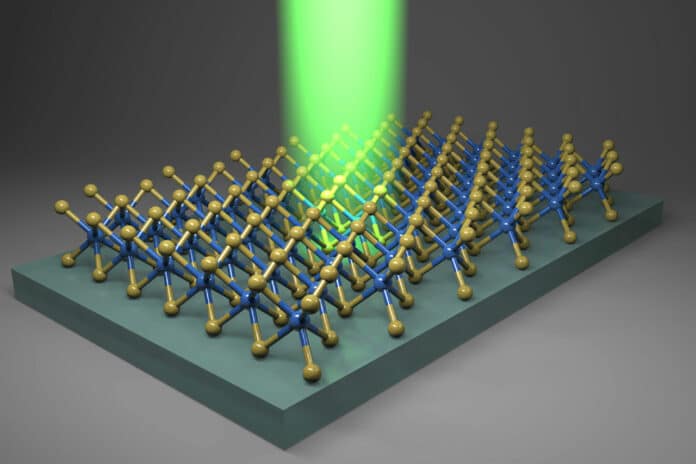Two-dimensional (2D) materials, consisting of a single layer of atoms, are generally used in modern miniaturized devices. However, device operation may lead to substantial temperature rise and thermal stress, causing device failure.
Such a problem occurs due to a poor understanding of how 2D materials expand when temperatures rise. These materials are thin and optically transparent, so their thermal expansion coefficient (TEC) is nearly impossible to measure using standard approaches. To address such thermal challenges, it is essential to have a good understanding of the thermal expansion coefficient (TEC).
A new MIT study highlights a new technique to precisely measure how atom-thin materials expand when heated. Instead of directly measuring how the material expands, they used laser light to track the vibrations of the material’s atoms. They accurately measured the thermal expansion coefficient by measuring the same 2D material on three different surfaces or substrates.
This method is highly accurate, achieving results that match theoretical calculations. The approach confirms that the TECs of 2D materials fall into a much narrower range than previously thought. This information could help engineers design next-generation electronics.
Co-lead author and former mechanical engineering graduate student Lenan Zhang SM ’18, Ph.D. ’22, who is now a research scientist, said, “By confirming this narrower physical range, we give engineers a lot of material flexibility for choosing the bottom substrate when they are designing a device. They don’t need to devise a new bottom substrate to mitigate thermal stress. We believe this has important implications for the electronic device and packaging community.”
Scientists solved the problem by focusing on the atoms that make up the 2D material. As the temperature rises, its atoms vibrate at a lower frequency and move farther apart. This causes the material to expand.
A technique called micro-Raman spectroscopy was used to measure these vibrations. The method involves hitting the material with a laser. The vibrating atoms scatter the laser’s light, and this interaction can be used to detect their vibrational frequency.
However, the atoms of the 2D material change in vibration as the substrate stretches or contracts. To focus on the material’s intrinsic qualities, the scientists are required to decouple this substrate impact. On three different substrates—copper, which has a high TEC, fused silica, which has a low TEC; and a silicon substrate with several microscopic holes—they measured the vibrational frequency of the same 2D material. They can measure these tiny regions of freestanding material because the 2D material hovers above the holes on the latter substrate.
Later, scientists placed each substrate on a thermal stage to precisely control the temperature, heated each sample, and performed micro-Raman spectroscopy.
The findings also showed something unexpected: 2D materials fell into a hierarchy based on the elements that comprise them. For instance, a 2D material that contains molybdenum always has a greater TEC than one which contains tungsten.
When scientists dig deeper, they find that this hierarchy results from a fundamental atomic property known as electronegativity.
Yang Zhong, a graduate student in mechanical engineering, said, “They found that the larger the difference between electronegativities of elements that form a 2D material, the lower the material’s thermal expansion coefficient will be. An engineer could use this method to quickly estimate the TEC for any 2D material, rather than relying on complex calculations that typically must be crunched by a supercomputer.”
Zhang said, “An engineer can just search the periodic table, get the electronegativities of the corresponding materials, plug them into our correlation equation, and within a minute, they can have a reasonably good estimation of the TEC. This is very promising for rapid materials selection for engineering applications.”
Scientists are now planning to use their technique on many more 2D materials. They now want to create a database of TECs.
Journal reference:
- Yang Zhong, lenan Zhang et al. A unified approach and descriptor for the thermal expansion of two-dimensional transition metal dichalcogenide monolayers. Science Advances. DOI: 10.1126/sciadv.abo3783
